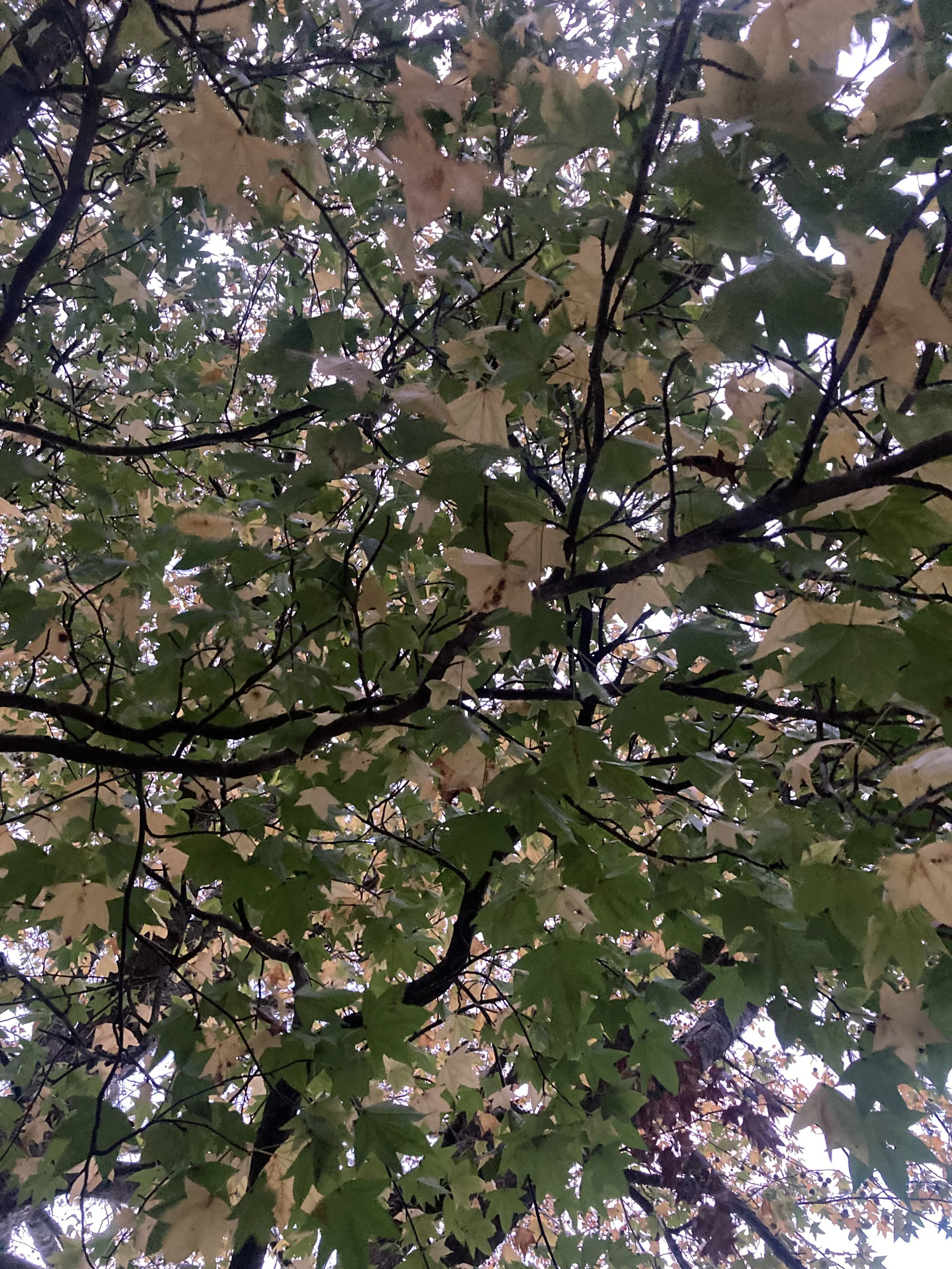Neuroception: The Body’s Innate Wisdom
Neuroception is a term which describes the bodies subconscious ability to observe and perceive danger or safety in the environment we inhabit. We use neuroception whether we are in a social setting with people, driving a car on the motorway, or if we are going for a solitary walk in a forest. We know this expression ‘to have a gut feeling’ which is often the body intuiting something that might not be ok, a kind of warning bell. Sometimes our body’s neuroception can guide us in this way to listen and make safe choices, other times we may push this information aside and discount our inner knowing. Sometimes, we may also be continually in a state of interpreting a familiar felt sense from the past which might not be true in the present moment (i.e. perceiving threat when there is no danger). This is particularly the case where the autonomic nervous system in the body has been affected by trauma and mental illness. Often in the case of trauma and mental illness there is difficultly in feeling the body, which makes it hard to feel safe and detect safety.
The diagram below shows an overview of the Polyvagal Theory, with different neural pathways activated through the bodies neuroceptive awareness. For more information on the Polyvagal Theory and the Autonomic Nervous System you can read about this in a previous blog article (you can find this at the bottom of this article).
Neuroception and Acupuncture
Acupuncture is a therapeutic modality which involves social engagement, and engages the body in a process of feeling internal sensations. Alongside sensations, emotions can often arise spontaneously when the body is met and feels safe to experience an emotion. During an acupuncture treatment the body is also invited into a state of the autonomic nervous system where restore is possible. This is a hybrid state of the nervous system where both ventral vagal and dorsal vagal systems are mutually present. Often when people are receiving an acupuncture treatment they enjoy the feeling of a sensation as though it is a release of something, and when this happens the body is having an experience of inner intimacy with greater parts of the self, or another way to say this is the subsconscious body-mind in being felt and brought into awareness. What is being released, or changed depends on the inner experience of the person. It might be felt only as a bodily sensation, a dull ache is common, other times it might be experienced as an emotion, a memory of a past experience held in the body, words and thoughts may arise, or the experience may be felt as colour, or temperature.
““ The body remembers, the bones remember, the joints remember, even the little finger remembers. Memory is lodged in pictures and feelings in the cells themselves. Like a sponge filled with water, anywhere the flesh is presses, wrung, even touched lightly, a memory may flow our in a stream “ ”
In Chinese medicine the term used to describe the desired needle sensation is called dé qì, translated as ‘getting qì’ . Dé qì is the bodies own internal inner experience. The technical term used for this sensing of the inner body is called interoception. Interoception is a type of neuroception that is directed inwardly towards the inner world of the body, whereas neuroception more broadly includes the whole experience of our bodies interacting with others and the environment around us. Interoception includes feeling things in the body like heart rate, temperature, organ movements, the bladders urge to urinate, and can be both conscious and subsconscious. Acupuncture can help to encourage a deeper felt sense of the body, faciliating interoception and the body’s ability to access hybrid states of the autonomic nervous system such as restore, enjoy, intimacy, connect. When the dorsal and ventral vagal nervous systems are activated it tones down the sympathetic nervous system dominance and helps to improve immunity, lessen anxious feelings, and stimulate the release of bodies own molecules which counter pain such as opiods, as well as stimulating bonding feel-good hormones such as oxytocin. This physiological process of the body being met with both the social engagement system of safety and the dorsal vagal system of immobilisation encourages the development of well-functioning neuroceptive capacity and helps to modulate the experience of fear in the body.
common TYPES OF DE QI
Dull ache or soreness (suān 酸)
Numbness or tingling (má 麻)
Fullness, pressure or, distention (zhàng 漲)
Heaviness (zhòng 重)
Spreading or extension along the line of an acupuncture channel (chuàn 串)
Neuroception and Hakomi
Hakomi is a form of relational psychotherapy which is body-centered and uses mindfulness in a therapeutic session. Hakomi helps to facilitate a deeper connection to the body in the presence of another therapist. It therefore deeply engages the ventral vagal and dorsal pathways through the possibility of re-learning to connect and be intimate with the body in a mindful way.
This diagram to the left, shows the three main neural pathways overlapping in the centre: ventral vagal (safety and social engagement), sympathetic (danger and mobilisation), and dorsal vagal (life threat - immobilisation. Surrounding this are various hybrid states that are possible when we engage more than one system simultaneously, with the exception of the commonly known pure states of connect (ventral vagal), fight or flight (sympathetic), and shutdown (dorsal vagal).
During a Hakomi session we are offered the opportunity to be curious about our neuroception, to bring an attention to what we notice in the body as well as what we notice in the relational field, and our interaction with our physical environment. This helps to facilitate an enhancement of the capacity for neuroception, which may be impaired due to trauma. Hakomi is also guided by the following core principles: Mindfulness, Loving presence, Non-violence, Unity, Organicity and Mind–Body Holism. These principles help to engage qualities intrinsic to the self, such as: curiosity, calm, courage, connectedness and compassion. When we have access to these qualities the ability to be present with the body and access the innate wisdom in the body is also enhanced.
Hakomi can be also considered a therapy which accesses deeply the right-brain, involved in working with the implicit – non-verbal and unconscious aspects of the self. A talking focused therapy approach, in comparison to Hakomi, is often oriented to the left-hemisphere conscious self-system (i.e. talking through what is conscious rather than working with the implicit pre-verbal body and what is unconscious). According to the work of Alan Schore, right-brain to right-brain forms of psychotherapy involve mutual regressions in the therapeutic dyad with incremental changes in the core patterning of the autonomic nervous system which re-balances the cerebral hemispheres (i.e. an integration of the right-brain unconscious with the left brain conscious self-systems). Deeper healing of attachment patterns or early developmental trauma can occur through this therapeutic process of both the therapist and the client mindfully and neuroceptively aware of themselves.
Acupuncture and Hakomi are both therapies which are body-centered and support flexibility of neural pathways and neuroception. Both are therapies which aim to support the whole person in their complexity, diversity, and potential for deepening awareness of the body. If you would like to experience an acupuncture treatment I offer treatments for general well-being and a range of health conditions in my Tauranga Acupuncture clinic.
Rose Skerten is a registered Acupuncturist and Chinese Medicine Practitioner and Certified Healing Birth Practitioner. She specialises in Birth Trauma Therapy, pregnancy and postpartum acupuncture, acupuncture for fertility and hormonal support, acupuncture for mental health and chronic pain.
REFERENCES
Wang Ju-Yi and Jason Robertson. Applied Channel Theory in Chinese Medicine: Wang Yu-Yi’s Lectures on Channel Therapeutics. Eastland Press, Seattle, 2008.
Yang X-Y, Shi G-X, Li Q-Q et al. Characterization of de qi sensation and acupuncture effect. Evidence Based Complementary Alternative Medicine. 2013; 2013: 319734. doi: 10.1155/2013/319734
Alan Schore. Right brain-to-right brain psychotherapy: recent scientific and clinical advances. Annals of General Psychiatry. 2022: 21 (46). https://doi.org/10.1186/s12991-022-00420-3
Stephen Porges. Neuroception: A Subconscious System for Detecting Threats and Safety. Zero to Three: May 2004.
Restorative Practices - Polyvagal Theory Resources


















